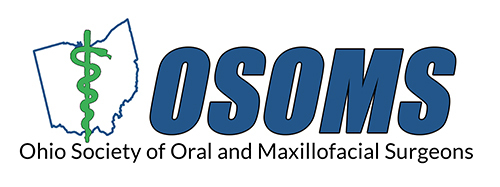Complete Story
03/17/2020
Member Alert: COVID-19 Guidance for OMS Practices
OSOMS is currently working to provide our members with as much information and guidance as can. We will continue to update as changes occur.
This is an evolving and constantly changing situation. Please remember: these are recommendations and not mandates and ultimately the decision of the treatment of patients still rests with the individual practitioner. Our No. 1 goal as always is to provide safe and effective treatments for our patients.
As you navigate this ever changing time please remember that the OMS community are respected surgeons in both the dental and medical communities. With that position comes an obligation to lead in putting society and patient interests first and foremost, and to sacrifice if necessary to help address a very serious threat to our communities.
AAOMS has carefully assessed the most recent developments in the COVID-19 pandemic, multiple state mandates and the recent ADA policy statement. With an emphasis on patient, staff, and oral and maxillofacial surgeon safety, AAOMS offers guidance for OMS practices by providing the following recommendations:
- Using all available patient information, current CDC Guidelines and best practitioner judgment, the OMS should – after conducting extensive discussions with patients and family members (i.e., parent or guardian) – determine if the surgical need for each patient is essential and immediate.
- Emergency and urgent care should be provided in an environment appropriate to the patient's condition.
- Patients testing positive for COVID-19 or displaying symptoms of COVID-19 who have acute oral and maxillofacial infections, active oral and maxillofacial disease, oral and maxillofacial injuries or are in acute pain requiring immediate treatment should receive care in facilities where all appropriate PPE, including N-95 masks, are available.
- Patients with conditions in which a delay in surgical treatment could result in impairment of their condition or impairment of pending treatment (e.g., impairment of the restoration of diseased tooth when another tooth that is indicated for removal prevents access to the diseased tooth) should be treated in a timely manner.
- Asymptomatic patients requesting removal of disease-free teeth with no risk of impairment of the patient's condition or pending treatment should defer treatment to a later date.
- As testing for COVID-19 becomes more readily available, and effective medications and vaccines are developed, guidelines for the management and treatment of patients will change. Until then, social distancing and effective infection control are especially essential components of the care we provide. In the short term (over the next 2 to 3 weeks), procedures that are determined by the oral and maxillofacial surgeon to be completely elective should be deferred.
Governor Mike DeWine contacted the Board and the Ohio Dental Association and asked for our help in addressing the spread of COVID-19. As integral parts of the medical community, we are being called to review our inventories and appointment books and make the adjustments to provide mutual aid and relief to our partners in the medical and surgical communities.
Governor DeWine has requested the following:
A review of inventories and identification of any surplus personal protective equipment and supplies. Once identified, contact your local Emergency Management Agency about sharing these goods with local hospitals and medical clinics for COVID-19 patients and clinicians. EMA contact list can be found here: https://webeoctraining.dps.ohio.gov/ohiocountyEMADirectorList/countyemalist_web.aspx
Please reschedule elective procedures including but not limited to:
- Any cosmetic or aesthetic procedures, such as veneers, teeth bleaching, or cosmetic bonding
- All routine hygiene appointments
- Any orthodontic procedures not including those that relieve pain and infection or restore oral function or are trauma-related
- Initiation of any crowns, bridges, or dentures that do not address or prevent pain or restore normal oral functioning
- Any periodontal plastic surgery
- Extraction of asymptomatic non-carious teeth
- Recall visits for periodontally healthy patients
- Delay all appointments for high risk patients, including ASA 2 and 3 patients, unless it is an emergency
By sharing supplies we are directly supporting our fellow clinicians as they undertake the greatest viral threat in modern history. By rescheduling elective procedures we are doing our part to prevent community spread.
We urge you to undertake the two above strategies and consider the following additional measures:
- Use cell phone triage - use the cell phone to take a picture of the area and text to the dentist
- Have a detailed questionnaire/conversation before scheduling appointments and prior to any procedure about flu like symptoms, travel abroad for self and family/friends/co-workers etc. to permit a thorough evaluation of the patient
- Consider taking the temperature of the patient at the outset
- Reconsider scheduling high risk patients unless they need emergency treatment
- Careful evaluation of the need for scheduling of ASA 2 & 3 patients
- Use of 1% hydrogen peroxide rinse prior to examination of the oral cavity by the patient to reduce microbial load
- Use of rubber dam isolation & high volume suction to limit aerosol in treatment procedures
- Proper disinfection protocol between patients with a possible repeat of the protocol for a 2nd time.
To prevent over-crowding of waiting areas or the possible spread of infection:
- Consider having patients wait in their cars instead of the waiting areas to prevent inadvertent spread of the virus (call patient when surgical area is ready for treatment)
- Consider staggering appointment times to reduce waiting room exposure
- Consider rescheduling elective procedures on ASA 2 & 3 patients (https://www.asahq.org/standards-and-guidelines/asa-physical-status-classification-system)
- Have front desk staff take measures to prevent exposure
- Have sterilization staff, lab technicians and auxiliary staff take adequate measures to prevent exposure
- Limit access to waiting room use to only patients. Accompanying individuals have to wait in their respective transportation.
- Remove all magazines/toys etc from waiting area to prevent contamination.
Thank you for your understanding and cooperation as we manage through these very difficult and unprecedented times.

